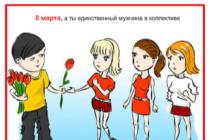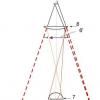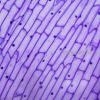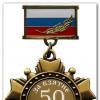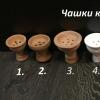When kept at home, it is impossible to provide the birds with a full range of natural feeds, so the poultry farmer or fancier should look for a complete replacement for them from seeds of cultivated and wild plants, fruits, berries, animal feed and human food. However, it is not always easy to transfer a bird to an unfamiliar food. She may starve to death, but she will not take a single grain or piece of mixture that she has never eaten. To prevent this from happening, new feeds should be introduced gradually, over several days, reducing the proportion of those feeds that the bird has eaten before. In addition, a sharp transition from one food to another adversely affects the digestion of birds, especially chicks.
All feed must be of high quality. You can not eat grain in which there are rodent feces, ergot, mold and other impurities. The grain mixture, before giving it to the birds, must be sieved, washed and dried in the sun or in a gas oven at a temperature not exceeding 60 ° C.
The selection of certain feeds and their proportion in the diet depend on the type and age of the bird, the way it is kept (in a cage or aviary) and the time of year. Birds kept in cramped cages are given less food than those living in an aviary (due to the considerable freedom of movement in an aviary, there is practically no danger of overfeeding). At the same time, even a slight omission in feeding a bird sitting in a cramped cage can lead to its illness. With improper feeding, metabolism is disturbed, feathers begin to fall out or the birds themselves begin to pluck them, oviposition is disturbed, etc.
During the period of oviposition and rearing of chicks, the amount of food and the frequency of its giving per day are sharply increased at the expense of animals and soft food. Violation of feeding at this time adversely affects not only adult birds, but also the development and viability of chicks.
Birds breed most successfully in aviaries, where, under conditions close to natural, they can find food that they like and are especially well absorbed. It is in the enclosures arranged on the backyard that there are no difficulties with greens, germinated seeds (when eating seeds from feeders, birds scatter them, they sprout, and from time to time the earth is covered with fresh tender shoots of plants). Animal food is also more accessible to those birds that live in an outdoor aviary, and do not sit in cages. In the soil, on the branches of shrubs and in the grass, they constantly find various small insects and their larvae, and they often catch small flies and mosquitoes on the fly.
The amount of feed needed per day is determined empirically, since birds of even the same species and age with the same method of keeping have a different appetite. By carefully observing your pets, you can set this amount: the birds should eat the entire daily allowance of feed without a trace. Birds must not be allowed to seek out favorite seeds in the grain mixture, while others are left intact or left
hungry.
For feeding partridges and kekliks, you can use kitchen waste: soaked pieces of the remaining white bread, chopped vegetables, boiled potatoes. Grain feed, bran, cereals, as well as vitamin flour are added to this feed. In the summer, birds are given alfalfa, lettuce or herbs. Alfalfa can be knitted in sheaves and hung in an aviary 30 cm from the ground. From animal feed, these birds actively eat cottage cheese, minced meat, insects (in any form) and their larvae, finely chopped vegetables and root crops, fresh herbs.
Feed is given at the rate of 70-80 g per head per day. In winter, the most rational type of feeding is grain and compound feed, into which meat and bone meal and vitamin supplements are introduced.
The world of partridges has several main species known in Russia and in Asian countries. To date, several species of this bird are known, which have become almost domestic. Red (fire) and colored (variegated) partridges are of little fame, and rare farmers or amateurs have achieved significant success in keeping them.
Sand and stone (mountain) partridges are successfully bred in domestic and farms. As can be assumed, the breeding of the keklik originates precisely in the regions where it was known in its natural environment, in the natural. These are, respectively, mountains and foothill regions. The North Caucasus of Russia in this regard occupies a leading position in the country.

Partridge keklik: external description
Typically, this bird has striped wings, with an alternating black and white pattern, a gray back, and two black bands covering the neck and sides of the head. A white spot below the beak reaches the middle of the chest. The beaks and paws of birds are always orange-red.

It is known about involuntary mutations in breeding work with kecliks, when the bird acquires a pronounced white color, less often completely black.

The average weight of an adult male keklik in captivity can reach 600 grams, females are usually less. Their weight rarely exceeds 500-550 grams. Males are distinguished by a growth on their paws, this is a rudimentary spur.
Features of the contents of the cupcake
This bird is a flock, loving communication with representatives of its own species, which makes it relatively easy to keep even in cages. Despite the recommendations of many experienced poultry farmers, it is possible not to build colossal enclosures for partridge keklik, but to keep the bird in cages twice its height. It will be a height of 25 to 35 centimeters.

Female partridges, starting from the age of 16-18 weeks, can lay eggs. Depending on weather conditions, natural lighting (solar activity), the keklik's egg-laying season can stretch until the end of July. The weight of an egg is no more than 15 grams, and the number of eggs laid per season from one hen can be 40, 50, and even 60 eggs.
In the content of the keklik in the cellular version, the same methods for increasing egg production are provided as in working with chickens and quails. By shortening the day to 16 hours, you can achieve 3 eggs within 48 hours. Forced lighting is calculated from the average (50-80 square meters = 10 watts), each tier should be illuminated by at least 10%. Keklik is very convenient to grow in cages like quail. Juveniles up to 3 months feel quite comfortable in low compartments, in racks. It is recommended to place chickens that have reached 6 weeks of age in cages of this geometry. Experienced specialists have noticed that with a full cycle of bird cage keeping, without walking in open space, puberty in a bird may occur earlier.
Incubation and work with the brood of a keklik
The incubation period for a keklik egg is 23 days. Growing chickens of this species does not present any special difficulties. The main requirement for a cage for hatched young is space. The cage must have forced lighting, it is better to use a matte lamp of white, warm light, 45-65 watts. Keklik chickens are active and conflict, so it is better to settle them in as small groups as possible. On average, in a cage the size of a typical bottle container, there should be no more than 10 individuals.
After collecting the eggs and before placing them in the incubator, the required ambient temperature should not be less than 13 and more than 20 degrees Celsius. The storage compartment should have a humidity of 60% and a temperature of 37.5 degrees Celsius. In this mode, partridge eggs can be stored for up to three weeks, according to many poultry farmers. To do this, be sure to turn the eggs fixed in the tray once a day. By the way, the same period will allow you to identify spoiled and unsuitable for incubation eggs. Do not send dirty eggs to the incubator, and eggs that have significant deviations in size.
Before starting the hatching process, it is recommended to treat the internal contents of the incubator and trays with an antiseptic. Up to 21 days of incubation, air humidity should be 59-60 percent, with average temperature 37.6 degrees, from 22 days you need to lower the temperature to 36.5 degrees, increase the humidity to 69 percent. In this mode, the brood will be completely formed within 23-25 days. After collecting the chicks and transferring them to other containers, it is recommended to re-treat all trays and the interior of the incubator.
The recommended ambient temperature for day old chicks should be at least 31 and not higher than 35 degrees. For a particularly accurate temperature range, personal observations of the behavior of fry can be used: at too low temperatures, the chickens cling to each other, when the comfortable temperature is exceeded, they keep away from each other all the time. By lowering the temperature by 1-2 degrees daily, it is necessary to accustom the bird to a temperature of 21 degrees Celsius by the third week.
The bird is active from the first hours, kecliks quickly become independent and easily get used to the feeder and drinker. For feed, it is best to use bird feed with the addition of protein, as this bird will rapidly begin to lose weight with a lack of this element. The percentage of protein in special feeds (complementary foods) should not be less than 24-30% of the total mass of the product. The mass of grain (crushed) feed that a bird should receive before the age of 16-18 weeks is 3600 grams (28 grams per day).
Partridges - birds of the pheasant family, relatives of domestic chicken, live throughout Russia. A small bird is a subject of sport hunting, often commercial. Despite the absence of a threat of extinction, there has been a decrease in the number of partridges in nature.
First of all, this bird is bred for dietary meat. But partridge eggs are no less in demand, due to the content of potassium, iron, phosphorus. They are difficult to find in free sale, and the price of partridge eggs is much higher than chicken eggs. One egg will cost an average of 15 rubles. It is also unlikely that it will be possible to buy partridge meat at a low price. In different regions of the country, the cost per carcass ranges from 1000 to 1300 rubles. But supply has not kept pace with demand.
Breeding and keeping partridges at home is not an easy job, but with the right approach, the profit that a breeder can get will justify all the trouble.
What breeds of partridges to choose for breeding at home?
In nature, there are several subspecies of partridge. The most famous of them are the following:
- white;
- tundra;
- white-tailed;
- gray;
- stone - keklik.
They differ in appearance, which depends on the region in which the species lives. Birds are prone to dimorphism, a condition in which a bird changes appearance at the moment of danger.

All partridges lead a sedentary lifestyle: both in winter and in summer they remain in their habitat. The bird is very prolific, therefore it is distributed throughout the world. But for breeding and keeping partridges at home, the gray partridge is most suitable.
The gray partridge is a small bird weighing up to 500 g. Breeding gray partridges at home is due to several factors:
- The bird easily adapts to new living conditions.
- It has the highest egg production among other partridge subspecies.
- The bird is unpretentious in food.
IN Lately Keklik breeding is gaining popularity.
Keklik bird: care and breeding
More recently, the keklik or mountain chicken could only be found in zoos. This subspecies of partridge is found in the mountainous regions of the Caucasus. This brightly colored bird is rarely seen in the European part of the country. Usually kecliks are bred near their habitat in nature.
This small bird of the pheasant family has always been an object of sport and commercial hunting.
Partridge meat has excellent nutritional properties, excellent taste, high content of valuable protein and a minimum amount of carbohydrates.
It is no coincidence that in recent years partridge has attracted not only hunters, but also private poultry farmers, and in expensive metropolitan restaurants they offer delicacies from partridge meat.
What breeds of partridges to choose for breeding at home?
Until recently, the breeding of partridges in captivity was purely experimental, today in Russia there are dozens of farms where these miniature representatives of the pheasant family are successfully bred.
As a rule, in the post-Soviet space it is practiced breeding gray partridges, which live almost everywhere in our country (except for its northern regions).
This is a small bird (approximately the size of a hazel grouse), the weight of an adult varies from 350 to 600 grams, on average, the weight of a bird kept in captivity is 400-500 g.
The gray partridge is considered the most prolific of all partridge species, often with more than 20 eggs in its clutch (the female lays 1 egg per day). Only after laying the last egg, the partridge begins to incubate.
Red partridge Spanish- Another species of partridge, which is well assimilated in the household. Outwardly, this small, well-fed bird is very similar to its close relative, the keklik. IN wild nature this species found in the mountains of France and Spain. On this moment red partridge is bred mainly for ornamental purposes.
Fundamentals of keeping and caring for chicks and adult birds
However, open cages are not the best option, because the partridge not only runs fast, but also flies remarkably. Moreover, she does it so noisily that she raises the whole flock.
For the first generations of domesticated partridges, enclosures closed on all sides, installed in a quiet place, will be the best place to keep them.

 Partridge chick at two and three weeks old
Partridge chick at two and three weeks old It is advisable to assemble the frame of the aviary from wooden beams and poles, and use a mesh not metal, but nylon with a small cell (1x1 cm). In this case, the bird will not injure itself with blows during takeoff.
- Myself the house must be spacious, the optimal height of the enclosure is 1.8-2.2 m. The area of \u200b\u200bthe poultry house depends on the number of guests: at least 0.5 square meters of territory is required for each bird.
- In the aviary create conditions close to natural- bushes, sheaves of hay and other shelters are placed in them.
- Part of the house must be closed so that the partridges have somewhere to hide from the weather. At the entrance, a vestibule is necessarily arranged to prevent the escape of the bird during feeding.
- Shallow wide feeders are placed in the poultry house, install drinking bowls and baths with sand. On the floor in winter period be sure to put hay or straw.
Experience shows that the premises where partridges in summer and winter, should have natural light, because the lack of ultraviolet delays the start of the breeding season.
Breeding partridges is a process that requires a special approach. The fact is that this bird is monogamous in the wild - with the onset of spring, males and females break into pairs and live in "families" throughout summer season. At the same time, the male takes an active part in the rearing of the younger generation.
At home, it is also necessary to form pairs. If the female drives and pecks the male, then he should be replaced with another. If birds of different sexes behave calmly towards each other, then it is considered that the pair is formed.

 Partridge enclosure
Partridge enclosure What to feed a domestic partridge?
The formation of the daily diet of a domesticated partridge should be approached responsibly. Nutrition should be varied, balanced and fortified.
Empirically, the types of food that partridge chicks and adults eat with appetite, without scattering and without leaving half-eaten, were identified.
These are the following types of grains and seeds:
- Wheat.
- Lentils.
- Sunflower seeds.
- Millet.
- Buckwheat.
- Crushed barley.
Chopped fruits and vegetables:
- Apples.
- Pears.
- Plums.
- Cabbage.
- Cucumbers.
- Zucchini.
- Red Ribes.
- Carrot.
- Sugar beet.
Fresh greens:
- Dandelion.
- Alfalfa.
- Nettle.
- Clover.
- Shoots and leaves of weeds.
- Salad.
Mineral top dressing is desirable to pour into a separate feeder in crushed form. Such a mixture usually includes sand, ready-made mineral supplements, chalk and calcium gluconate, and eggshells.
Digestion in partridges arranged in such a way that their stomach digests raw grain more easily than subjected to heat treatment. Wet mixers prepared in arbitrary proportions with the addition of chopped grass have proven themselves well. In winter, partridges are fed berries of lingonberries, viburnum, mountain ash.
It is important to remember that underfeeding, like overfeeding, is equally harmful to birds. The total weight of food fed per day for one partridge should be 40-50 grams of grain mixture, with two meals a day.
In the first two days, newborn chicks of partridges are fed boiled yolk grated through a large sieve. chicken egg. Further, the crumb of white bread soaked in milk is gradually introduced into their diet, and then they gradually switch to adult food.
Common illnesses
Young partridges often suffer from atrophy of the muscular stomach. This pathology develops as a result of regular feeding of chicks with monotonous mealy foods and insufficient presence of sand and fine gravel in the feeders.
Often there are cases of beriberi caused by a deficiency of vitamins of groups A, D and B. To prevent the disease, partridges should be provided with fresh herbs, carrots and other vegetables containing carotene and vitamin A.
Keeping domesticated birds in poorly ventilated areas can lead to serious respiratory health problems.
Where to buy partridges or hatching eggs for breeding?
The following farms are engaged in the sale of partridges and hatching eggs in Moscow:
- Nursery RUS ZOO, located at the address: Moscow, Novomoskovsky AO, Filimonkovskoye settlement, Koncheevo village.
- Peasant farming of the Simbirevs, Moscow region, the village of Ivashkovo, Shakhovsky district.
In the Leningrad region:
- OOO "Lenoblpticeprom" Leningrad region, Gatchinsky district, Tervolovo settlement.
- Kuraferma, Leningrad region, Gatchinsky district, Small Kolpany village, Zapadnaya st., 7.
The estimated cost of a pair of gray partridges is 1000-3000 rubles, depending on age. Partridge hatching eggs are sold at an average of 80-100 rubles apiece.





